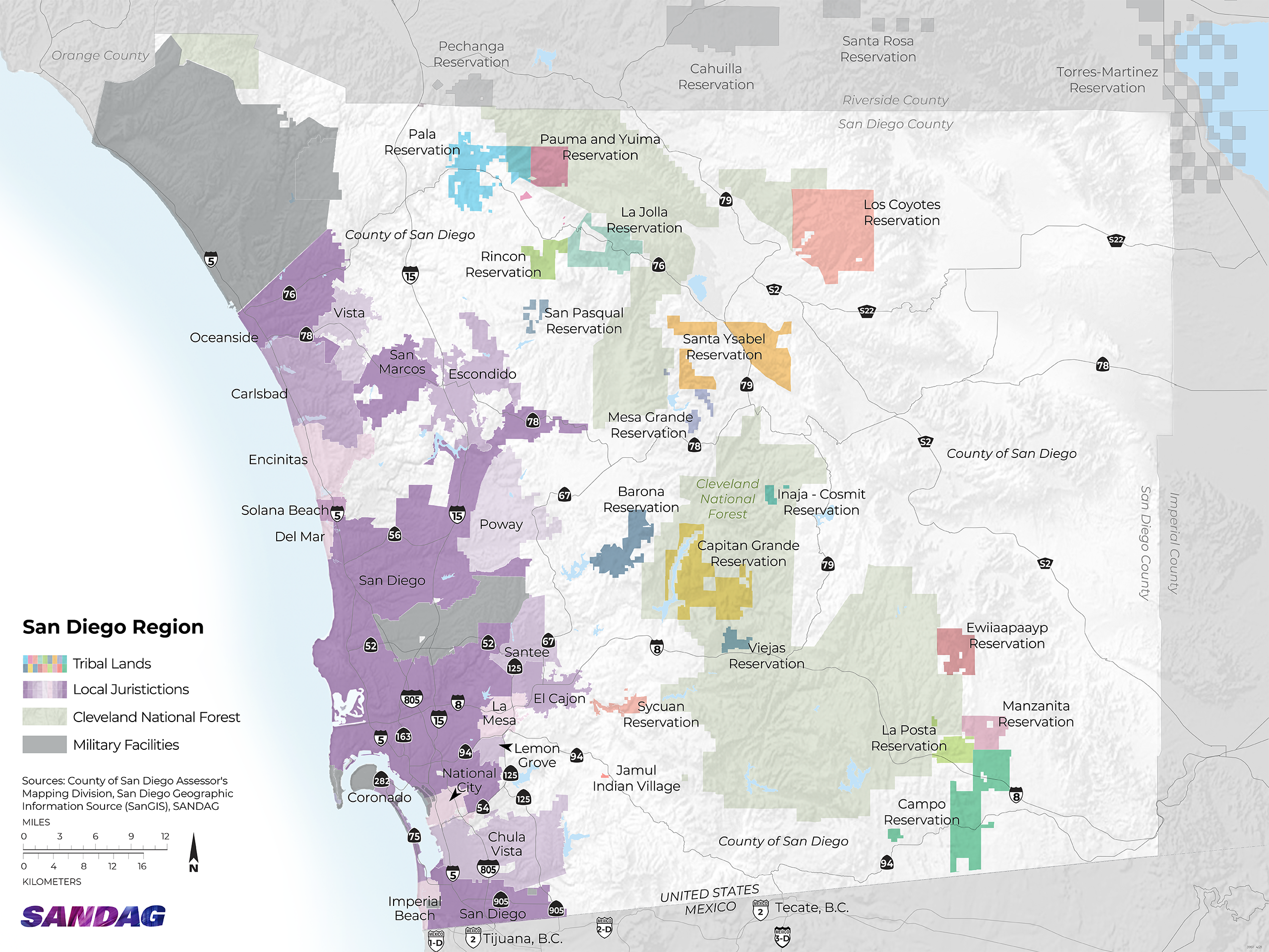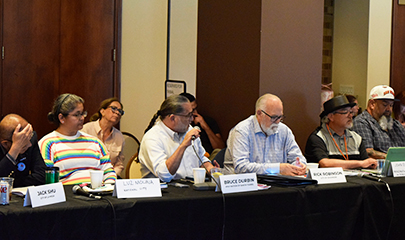San Diego County is home to more tribal nations than any other county in the United States. Native American reservations are comprised of more than 127,000 acres in the San Diego region, accounting for approximately 4% of the region’s land base. All tribal nations are located within the unincorporated eastern portion of the county.
SANDAG maintains formal agreements with the Southern California Tribal Chairmen’s Association (SCTCA) to collaborate with the region’s 17 sovereign tribal nations. We are responsible for ensuring that our plans for the region protect tribal lands, culture, and resources throughout every stage of the process.
For more than 20 years, collaboration efforts with the SCTCA and tribes in the San Diego region have continued and expanded through regular convenings such as quarterly Interagency Technical Working Group on Tribal Transportation Issues (Tribal TWG) and monthly Tribal Task Force meetings, Tribal Symposiums held jointly with the Borders Committee, and quadrennial Tribal Summits held jointly with the Board of Directors. These convenings provide multiple opportunities for meaningful collaboration for the future of the San Diego region.
Executive Order 13175 requires consultation and coordination with Indian tribal governments.
Map of Tribal Lands





















